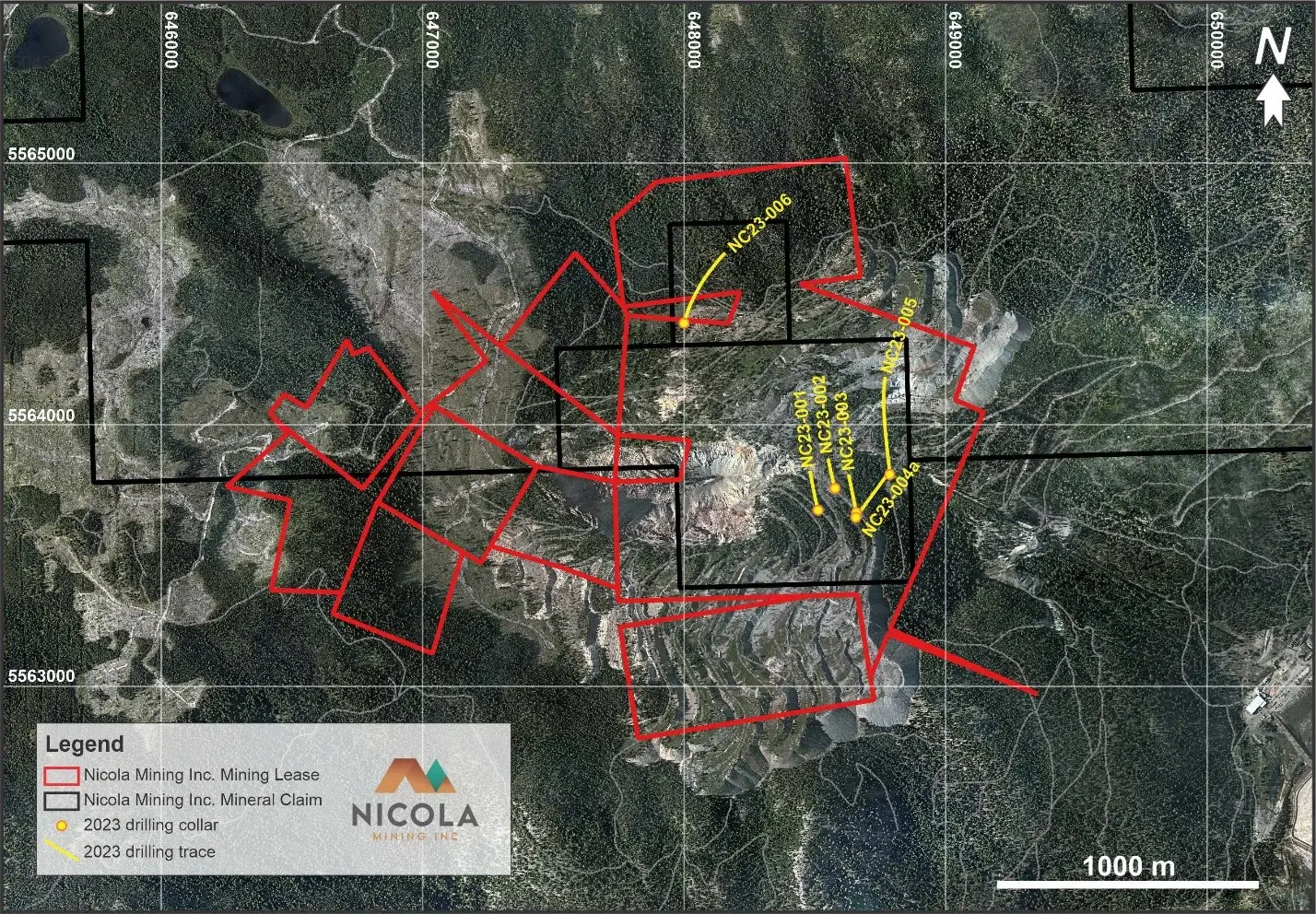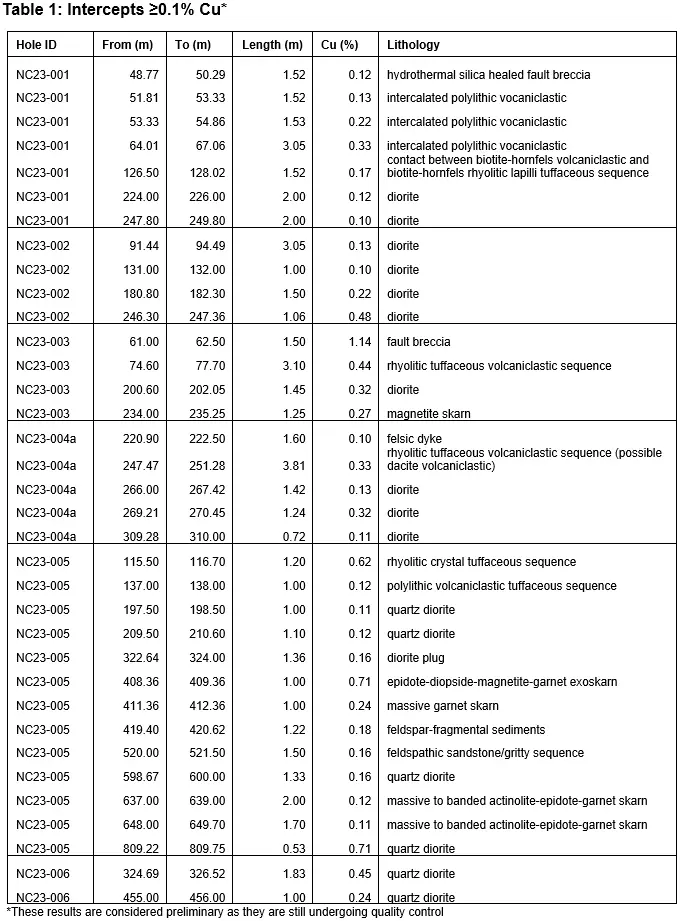Potential for Nearby Porphyry System
In June 2023, Canadian Nicola Mining (WKN A3D3LF / TSXV NIM) conducted a drilling program on its New Craigmont copper project in British Columbia. New Craigmont borders the historical Craigmont copper mine, and the company used these drillings to investigate the potential for a southeastern extension of the historical Craigmont skarn ore body and the possibility of a copper porphyry being present there. According to CEO Peter Espig, the analysis of the drilling data has now yielded encouraging results.
The drilling program on the property, which is also located just 33 kilometers south of Canada’s largest copper mine, Teck Resources’ Highland Valley mine, included six drill holes with a total length of 2,684 meters.

Potential for Nearby Porphyry System
Drill holes NC23-001, NC23-002, NC23-003, and NC23-004a were sunk southeast of the historical Craigmont copper mine to test the potential for continuous skarn mineralization. NC23-001 intersected two sections of (weakly mineralized) exoskarn occurring in calcareous sedimentary rock of the Nicola Group, from 67.25 m to 99.8 m and from 172.43 m to 185.50 m. The skarn sections consist of banded actinolite, magnetite, epidote, brown garnet, and chalcopyrite veins (Figure 3). In drill holes NC23-002, NC23-003, and NC23-004a, extensive alterations (epidote, chlorite, and biotite) were discovered in sedimentary and volcanic rock of the Nicola Group, while no precise skarn section was found in the drill core. This alteration is characteristic of porphyries and supports the possibility of a nearby porphyry system.
Drill holes NC23-005 and NC23-006 were drilled northeast and north of the historical pit and targeted the Guichon quartz diorite. Extensive potassium alteration (K-feldspar), propylitic alteration (epidote and chlorite), and veins with chalcopyrite +/- molybdenite were observed in the core, indicating the presence of a porphyry copper system at New Craigmont. The occurrence of these features along with discrete zones of significant copper content (>0.1% Cu; see table), all located near the historical high-grade skarn, support the hypothesis that there is a porphyry center (or multiple) on the property and that a copper porphyry system is the mineralization source for the historical Craigmont skarn.

Nicola is now working on summarizing these new data along with all historical and current core logs and laboratory results. Once this is done, a 3D model for geological interpretation will be created. Data from mapping and geophysical surveys will also be used for this purpose. The goal is to support target generation and enable Nicola to refine working hypotheses and integrate further data.
Plans for 2024
In the spring of the coming year, the company plans to first conduct geophysical IP (induced polarization) surveys on two particularly promising areas of New Craigmont. This will simultaneously close existing gaps in the IP data. Nicola will use this data along with magnetic and resistivity data to expand interpretations of structure, lithology, alteration, and mineralization. In the past, the results of IP surveys have highly corresponded with high-grade copper intersections.
Building on this and existing data, Nicola will plan drillings to be carried out later in the summer of 2024 on both areas surveyed with IP. In all these works, the company will continue to work closely with the Mineral Deposit Research Unit of the University of British Columbia. This unit is already conducting a study to investigate the porphyry-like alteration and mineralization at New Craigmont.
Peter Espig, CEO of Nicola Mining Inc. commented on the results: “Overall, the 2023 program delivered encouraging results. While we would have liked to see more mineralization directly southeast of the historical pit, drilling to the northeast revealed extensive alteration and indicates the potential for other mineralized bodies. We are particularly pleased to see that the outcrops, which we extensively mapped this time, align perfectly with the cross-section diagrams showing electromagnetic anomalies. These results reinforce our commitment to exploring and developing the New Craigmont project.”







